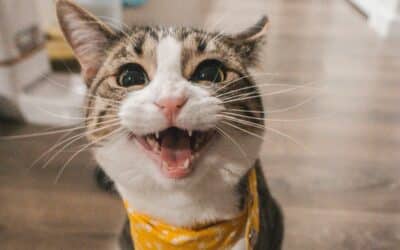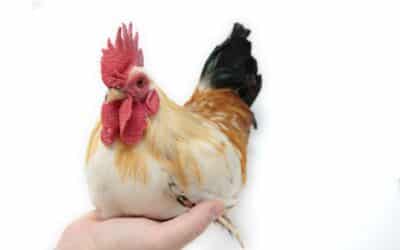If you’re thinking of adding a pet bearded dragon (Pogona sp.) to your family, you might be wondering about bearded dragon tank size. How much space do these lizards need? Can you get away with a smaller tank when they’re still young? What should their habitat contain?
Let’s go into bearded dragon tank size to make sure your pet ends up happy and healthy in your care.
Bearded dragon tank size for juveniles
Many places sell baby bearded dragons under 10” in length. Make no mistake: your new pet lizard definitely won’t stay this small. It can reach a length of up to 24” and will need plenty of space as an adult.
For baby bearded dragons, some recommend against an overly large vivarium. This is because this species eats live insects as part of its diet, and since the juveniles are not the most efficient hunters yet, they may end up going hungry.
Still, it might not be the best idea to buy a small tank like a 20 gallon long (about 30”/76 cm in length), simply because you’d have to upgrade your beardie pretty quickly. These guys gain length and mass quickly, reaching their adult size in about a year. This means you’d have to shell out money for another tank within months, which is just a waste!
Our advice is to refer to the section below on bearded dragon tank size for adults and stick with that. To make sure the baby dragon can find its food, you can just pop the insects in the fridge for a few minutes before feeding to slow them down. You could even restrict the dragon’s access to only part of the tank if you feel like it’s struggling.

Bearded dragon tank size for adults
As with many reptiles, there is still plenty of discussion on the ideal bearded dragon tank size. Because this species does grow pretty large and they do like to move around, we just stick to the age-old wisdom of ‘bigger is better’! A bearded dragon in a small tank might start obsessively trying to climb the glass, become aggressive, have a shorter lifespan due to obesity and become inactive.
The rule of thumb for minimum tank size for bearded dragons that most hobbyists stick to is 48” (about 120 cm) in length and 20” (about 50 cm) in width and height. That’s about the standard size of a 75-gallon aquarium. This being said, many prefer to go bigger.
A 120-gallon tank works fantastically and gives you much more space to replicate the dragon’s natural habitat. It also helps to prevent overheating and more easily create both hotter and more shaded spots.
Note: The above is for a single bearded dragon. We don’t recommend keeping multiple together in most cases, as the males especially can be quite territorial and may cause severe injuries to members of their own species.

What should a bearded dragon tank look like?
To figure out what your bearded dragon’s habitat should contain, it’s important to think about the species’ natural habitat. These lizards are naturally found in arid regions in Australia. Imagine the typical red rocks, with some sand and dust as well as some hardy trees, shrubs and patches of grass. In the wild, a bearded dragon would bask on rocks or branches to bring its body temperature up. It hides in shaded crevices if it gets too hot or feels threatened. They are semi-arboreal and do spend time in the trees.
So how does this translate to captivity? Here are a few basics your bearded dragon tank should contain:
- Substrate. Some insist on using sand, although this can end up causing impactions if your bearded dragon accidentally ingests it. Rock, tile, reptile carpet or just paper tend to be safer choices. No bio-active substrates, as these raise the humidity too much.
- Basking spot. Use a reptile light to heat a section of the tank, like a rock or solid branch. We don’t have space to go into detail here, but it’s important to get the temperature right. As such, you’ll also need a temperature gun and multiple thermometers. Additionally, you may need to get an under-tank heater with a thermostat if the ambient temperature drops too much during the night.
- Cool side. Prevent overheating by providing a cooler end in the vivarium as well.
- Lighting. You can’t just use any old light: bearded dragons need UVB lighting for proper functioning and development. Good old sunlight is great as well!
- Rocks and/or branches. These should at least give access to the basking spot.
- Food and water bowls.
You might also need a small dehumidifier, and it’s definitely handy to keep reptile-safe cleaning products on hand.

Conclusion
As with many pets, when it comes to bearded dragon tank size, bigger is better! Consider going for a 120-gallon tank outfitted with everything your bearded dragon needs. Without the right tank size, equipment and temperature, these reptiles can really end up suffering.
Keep in mind that this is not a full bearded dragon care guide: you should also look up temperature guidelines, the best equipment options and bearded dragon diet. A pet sitter is also handy if you’re planning any holidays!







